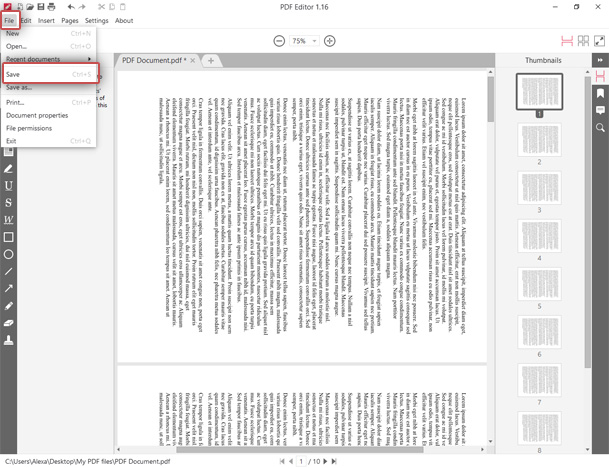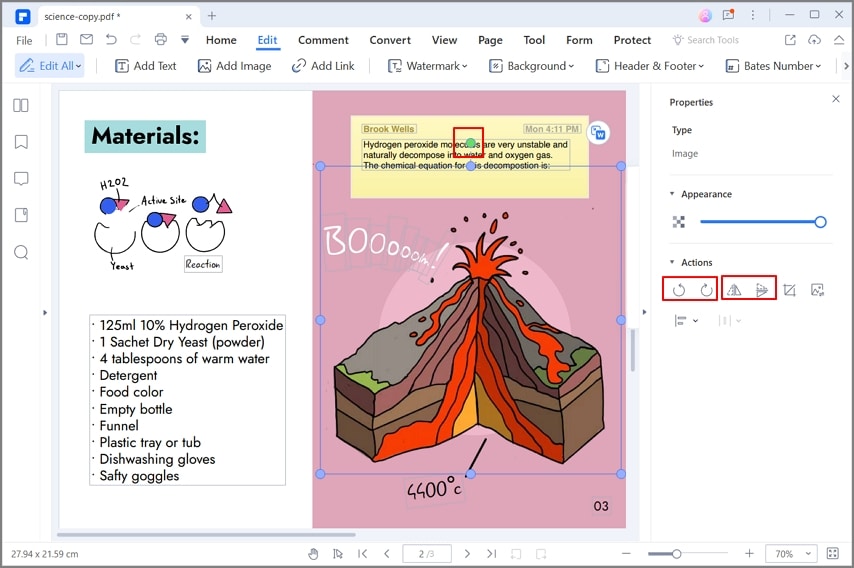

- ROTATE PDF PAGE INCREMENTALLY ZIP FILE
- ROTATE PDF PAGE INCREMENTALLY UPDATE
- ROTATE PDF PAGE INCREMENTALLY ISO
- ROTATE PDF PAGE INCREMENTALLY SERIES
Thus, with PDF 1.5, a new type of cross-reference storage system called cross-reference streams (because the data is stored as a standard stream object) was introduced. The most common type of table, shown in Figure 1-3, has only a single section listing all objects.Īs PDF documents became larger, it was clear that having this very verbose (and uncompressable) format was a problem that needed addressing.
ROTATE PDF PAGE INCREMENTALLY SERIES
The original form (from PDF 1.0 to 1.4) of the cross-reference table is comprised of one or more cross-reference sections, where each of these sections is a series of entries (one line per object) with the object’s file offset, its generation, and whether it is still in use.
ROTATE PDF PAGE INCREMENTALLY UPDATE
Having the cross-reference table at the end of the file also provides two additional benefits: creation of the PDF in a single pass (no backtracking) is possible, and support for incremental updates of the document is facilitated (see Incremental Update for an example). Additionally, navigation between pages is quick, regardless of how large the “numeric jump” in the page numbers is.

This model for random access means that a PDF can be opened and processed quickly, without having to load the entire document into memory. This table provides the binary offset from the beginning of the file for each and every indirect object in the file, allowing a PDF processor to quickly seek to and then read any object at any time. The cross-reference table is simple in concept and implementation, but it is one of the core attributes of PDF. These tokens serve not only to delineate the various objects and their types, as you saw in the previous section, but also to define where the four logical sections of the PDF begin and end. Looking at that, you might get the mistaken impression that a PDF file is a text file that can be routinely edited using a text editor-it is not! A PDF file is a structured 8-bit binary document delineated by a series of 8-bit character-based tokens, separated by white space and arranged into (arbitrarily long) lines.

Example 1-8 shows what a steam object in PDF might look like.
ROTATE PDF PAGE INCREMENTALLY ISO
Other filters can be found in ISO 32000-12008, Table 6. For images, the two most common filters are DCTDecode, which produces a JPEG/JFIF-compatible stream, and JPXDecode, which produces a JPEG2000-compatible stream.
ROTATE PDF PAGE INCREMENTALLY ZIP FILE
It’s quite common to compress large images and embedded fonts using the FlateDecode filter, which uses the same lossless compression technology used by the ZIP file format. One of the most important keys that can be present in the stream dictionary is the Filter key, which specifies what (if any) compression or encoding was applied to the original data before it was included in the stream. Although not commonly provided, the original uncompressed length can be specified as the value of a DL key. In the case of a compressed stream, it is the number of compressed bytes. In other words, it is the actual number of bytes serialized into the PDF file.

The stream dictionary always contains at least one key, Length, which represents the number of bytes from the beginning of the line following stream until the last byte before the end-of-the-line character preceding endstream. The stream dictionary never exists on its own it is always a part of the stream object. The use of the words stream (followed by an end-of-line marker) and endstream (preceded by an end-of-line marker) serve to delineate the stream data from its dictionary, while also differentiating it from a standard dictionary object. As such, they are the object type used to store large blobs of data that are in some other standardized format, such as XML grammars, font files, and image data.Ī stream object is represented by the data for the object preceded by a dictionary containing attributes of the stream and referred to as the stream dictionary. Streams in PDF are arbitrary sequences of 8-bit bytes that may be of unlimited length and can be compressed or encoded.


 0 kommentar(er)
0 kommentar(er)
